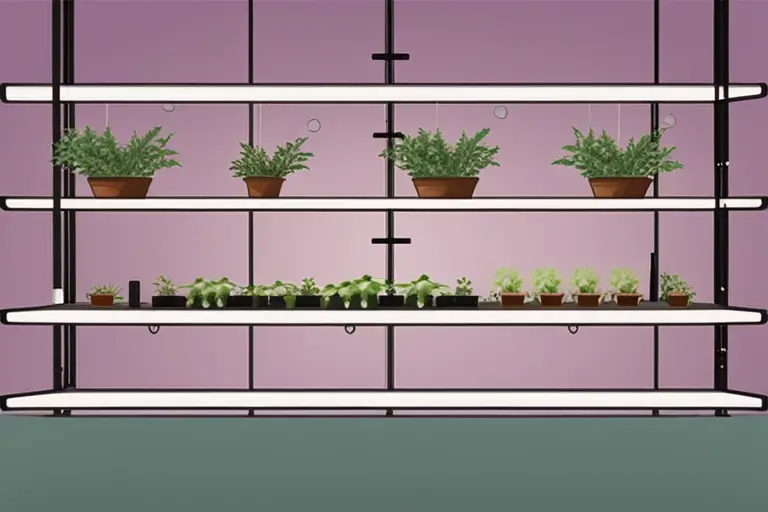Seed starting is an exciting time for indoor gardeners, as it marks the beginning of a new growing season. LED grow lights are an essential tool for seed starting, as they provide the seedlings with the light they need to thrive. However, there are a few things to keep in mind when optimizing LED grow lights for seed starting.
In this article, we will cover everything you need to know about optimizing LED grow lights for seed starting, including:
- Choosing the right LED grow lights
- Setting up your LED grow lights for seed starting
- Caring for your seedlings under LED grow lights
- Troubleshooting common seed starting problems
We will also provide a FAQ section to answer any questions you may have.
Choosing the right LED grow lights
When choosing LED grow lights for seed starting, it is important to consider the following factors:
- Spectrum: Seedlings require a full-spectrum light, which means that it emits all of the wavelengths of light that plants need for photosynthesis. Look for LED grow lights that are labeled as “full-spectrum” or “grow spectrum”.
- Intensity: Seedlings are delicate, so it is important to choose LED grow lights with a lower intensity. Aim for LED grow lights with an intensity of around 100-200 micromoles per square meter per second (μmol/m²/s).
- Coverage area: Make sure to choose LED grow lights that will cover the entire area where you will be starting your seeds. You can use a light meter to measure the light intensity at different distances from the LED grow lights.
- Price: LED grow lights can range in price from a few hundred dollars to several thousand dollars. Choose LED grow lights that fit your budget and needs.
Setting up your LED grow lights for seed starting
Once you have chosen the right LED grow lights, you need to set them up properly for seed starting. Here are a few tips:
- Hang your LED grow lights at the correct height. Seedlings need to be close to the light source, but not too close. Start by hanging your LED grow lights about 12 inches above the seedlings. You can adjust the height of the lights as the seedlings grow.
- Use a timer to control the light cycle. Seedlings need around 16-18 hours of light per day. You can use a timer to automate the light cycle so you don’t have to remember to turn the lights on and off each day.
- Monitor your seedlings closely. It is important to monitor your seedlings closely to make sure they are getting enough light. If the seedlings are stretching or leggy, it is a sign that they need more light.
Caring for your seedlings under LED grow lights
In addition to providing your seedlings with the right light, there are a few other things you need to do to care for them properly:
- Water your seedlings regularly. Seedlings need moist soil, but be careful not to overwater them. Overwatering can lead to root rot.
- Fertilize your seedlings regularly. Seedlings need nutrients to grow and thrive. You can use a balanced fertilizer diluted to half strength.
- Maintain the correct temperature and humidity. Seedlings thrive in warm, humid conditions. Aim to keep the temperature around 70-75 degrees Fahrenheit and the humidity around 60-70%.
- Monitor your seedlings for pests and diseases. Seedlings are susceptible to pests and diseases, so it is important to monitor them closely. If you see any signs of pests or diseases, take action immediately.
Troubleshooting common seed starting problems
Here are a few common seed starting problems and how to troubleshoot them:
- Leggy seedlings: Leggy seedlings are a sign that they need more light. Increase the intensity of your LED grow lights or lower the lights closer to the seedlings.
- Dumping off: Damping off is a fungal disease that can kill seedlings. To prevent damping off, make sure your seedlings have good air circulation and avoid overwatering.
- Pests: There are a number of pests that can attack seedlings, such as aphids and spider mites. If you see any pests, treat them immediately with an insecticidal soap or neem oil.
Advanced LED Grow Light Optimization Techniques for Seed Starting
Once you have the basics of LED grow light optimization down, there are a few advanced techniques you can use to further boost your seed starting success.
- Use light movers. Light movers are devices that move your LED grow lights back and forth or in a circular motion. This helps to ensure that all of your seedlings receive even amounts of light, preventing uneven growth.
- Use CO2 supplementation. CO2 is essential for plant photosynthesis. Supplementing your grow room with CO2 can increase seedling growth by up to 30%. However, it is important to note that CO2 supplementation is not necessary for all types of plants.
- Use a grow tent. A grow tent is a great way to create a controlled environment for your seedlings. Grow tents are typically made of reflective material, which helps to maximize light reflection and reduce heat loss. Grow tents also come with ventilation ports, which help to regulate the temperature and humidity inside the tent.
- Use a seedling heat mat. A seedling heat mat is a heating pad that can be placed under your seed trays. Seedling heat mats help to keep the soil warm, which can promote faster germination and seedling growth.
Conclusion
By following the tips above, you can optimize your LED grow lights for seed starting and achieve better results. By choosing the right LED grow lights, setting them up properly, and providing your seedlings with the care they need, you can produce healthy and vigorous seedlings that are ready to be transplanted into your garden.
FAQ
- Q: What is the best type of LED grow light for seed starting?
A: The best type of LED grow light for seed starting is a full-spectrum LED grow light with an intensity of around 100-200 μmol/m²/s.
- Q: How long should I leave my LED grow lights on for seed starting?
A: Seedlings need around 16-18 hours of light per day.
- Q: How far should my LED grow lights be from my seedlings?
A: Start by hanging your LED grow lights about 12 inches above the seedlings. You can adjust the height of the lights as the seedlings grow.
- Q: How often should I water my seedlings?
A: Seedlings need moist soil, but be careful not to overwater them. Overwatering can lead to root rot. Water your seedlings when the top inch of soil is dry.
- Q: How often should I fertilize my seedlings?
A: Fertilize your seedlings regularly with a balanced fertilizer diluted to half strength.
Additional tips
- Use a light meter to measure the light intensity at different distances from your LED grow lights. This will help you to ensure that your seedlings are receiving the right amount of light.
- Monitor your seedlings closely and adjust your LED grow lights as needed. If the seedlings are stretching or leggy, it is a sign that they need more light. If the seedlings are pale or yellow, it is a sign that they are receiving too much light.
- Be patient and consistent with your seed starting routine. It takes time for seedlings to grow and develop. With proper care, your seedlings will be ready to be transplanted into your garden in no time.



Leave a Reply